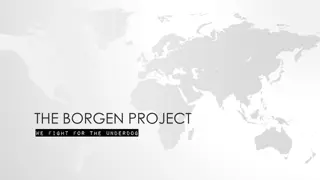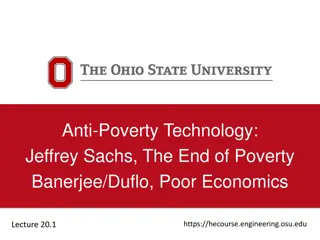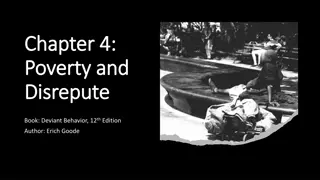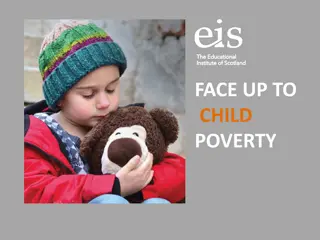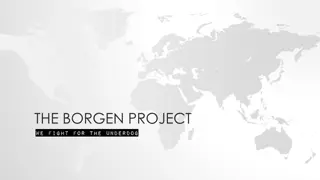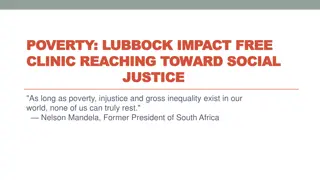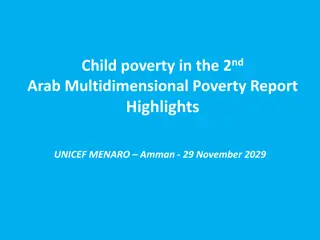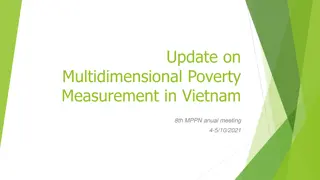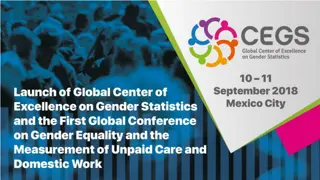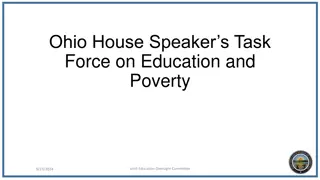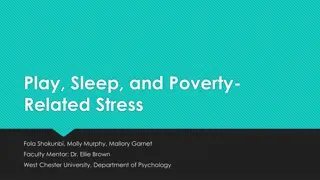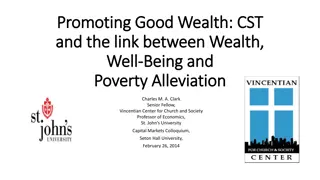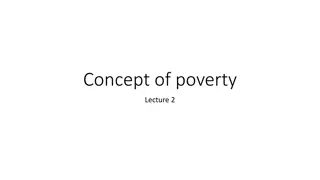Exploring Young Lives: A Global Research Project on Poverty and Children
Welcome to Unit 1 of EVERYONE COUNTS, where we delve into the Young Lives project examining the impact of poverty on children in Ethiopia, India, Peru, and Vietnam. Through interviews and data collection, researchers provide insights into the lives of these children, showcasing their daily routines, challenges, and aspirations. Join us in understanding the diverse experiences and resilience of young individuals across different cultures.
Download Presentation

Please find below an Image/Link to download the presentation.
The content on the website is provided AS IS for your information and personal use only. It may not be sold, licensed, or shared on other websites without obtaining consent from the author. Download presentation by click this link. If you encounter any issues during the download, it is possible that the publisher has removed the file from their server.
E N D
Presentation Transcript
EVERYONE COUNTS Unit 1: Welcome to Young Lives
UNIT 1 SESSION 1 Welcome to my life
WHAT IS YOUNG LIVES? Young Lives is an international research project looking at how poverty is affecting children s lives. It is a led by a team in the Department of International Development at the University of Oxford in the UK. Researchers have followed the lives of 12,000 children in four different countries: Ethiopia, India, Peru and Vietnam for 15 years, from 2000 to 2015.
WHAT IS YOUNG LIVES? The researchers have collected a lot of data about the children s lives. They have also interviewed the children and some of their families. This is Luz, one of the children interviewed in the project. She is from Peru.
WHERE IN THE WORLD? UK Viet Nam India Ethiopia Peru Can you locate the UK, Ethiopia, India, Peru and Viet Nam on a world map?
Afework Ethiopia Here is Afework. In his spare time he likes playing football with his friends and watching TV.
Seble Ethiopia In this photograph, Seble and a friend are cutting hay feed.
Ravi India Here is Ravi eating his lunch. He is having dahl (lentils) and rice.
Harika India Harika has to work hard to help her mother at home.
Manuel Peru I help my parents in the house and on our farm. We have hens, sheep, a pig and a cow as well as a dog, a cat and a turkey!
Luz Peru I enjoy being with my friends at school.
Hung Viet Nam I want to go to school to have more knowledge. I know that if I can study well, I will have a better life later.
Lien Viet Nam My favourite subjects are drawing and English.
TIME TO THINK What similarities and differences do you notice between the lives of these children? Are there any differences between the boys and the girls? Are there any differences between the children living in towns and cities and those living in villages or the countryside?
TIME TO THINK What similarities and differences are there between the life of your young person and your own life? Write down your ideas on Similarities and Differences (Activity sheet 2).
UNIT 1 SESSION 2 Where in the world?
WHERE IN THE WORLD? UK Viet Nam India Ethiopia Peru Can you locate the UK, Ethiopia, India, Peru and Viet Nam on a world map?
HOW FAR IS IT? Which country do you think is the furthest away from the UK? Rank the countries in order: closest to furthest. Use the world map to help you. India Ethiopia Viet Nam Peru
MATCH THEM UP What units would you use to measure these? centimetre (cm) kilometre (km) millimetre (mm) mile metre (m)
WHAT DO WE MEASURE LENGTH AND DISTANCE IN? Put these in order of shortest to longest. 1 metre (m) 1 kilometre (km) 1 mile 1 millimetre (mm) 1 centimetre (cm) Which units would you use for measuring distances between countries?
MILES OR KILOMETRES? Where have you seen miles and kilometres being used?
MILES OR KILOMETRES? Kilometres are metric units of length. Miles are imperial units of length. 1 mile 1.6km 5 miles 8 kilometres
UNIT 1 SESSION 3 How long will it take to get there?
WORLD TIME ZONES Follow the link to for a world map showing the time zones. www.timeanddate.com/time/map/
TIME ZONES World time zones were created in 1884. Use of high speed transportation systems within and between countries meant that there was a need for an international time system.
SPINNING AROUND The Earth takes 24 hours to rotate 360 . It moves through 15 of longitude each hour. Time zones are measured from the Prime Meridian which is at 0 longitude. This is an imaginary line which runs from the North Pole to the South Pole through Greenwich in the UK.
HAPPY NEW YEAR! Use your knowledge of time zones to sort these countries in the order in which they would celebrate the New Year. Ethiopia India UK Peru Viet Nam
PLANNING YOUR FLIGHT Complete the flight timetable to show how long it will take to fly to each country from the UK.

 undefined
undefined



